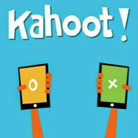SEVEN TIPS TO TAME TEMPER TANTRUMS!
- Pasta discipline.
This technique starts with a large jar and a few boxes of macaroni—small elbow macaroni works best. When students are all working together well or independently on a task, grab a handful of macaroni and dump it into the jar as a reward. When the jar is full, the students have earned an agreed-upon reward. Possible rewards: Free activity time, a night or two without homework, or an ice-cream party.
- Sh-h-h-h-h!
If students are a little talky, you might take advantage and whisper an instruction that begins “If you can hear my voice and (give an instruction), you can have ten minutes of free time at the end of the day.” The beginning of the whispered statement will get the attention of some or many students. Give the instruction just once; those who don’t give you their immediate attention or miss what you say because they were talking too loudly miss out on the reward.
- Three strikes!
Each student starts out the week with three index cards. The blank sides of the cards have their names printed in large letters. If a student disrupts or breaks a rule, instruct the student to write on the lined side of the card (on the first available line) the date and the disruptive behavior. Then the student must drop that card in the fishbowl at the front of the room. Establish a reward for students who still have three cards at the end of the week and consequences for those who have two, one, or no cards left. The next week, the students get their three cards back and start fresh. The cards also serve as a record when report card time comes or when a parent conference must be arranged.
- RESPECT.
Write the word RESPECT on the board at the start of each week. Each time the class gets out of hand or is off-task enough to be disruptive, put a big X through one of the letters. The class will have discussed and agreed in advance on the rewards and consequences for “keeping” or “losing RESPECT” during the week. Other words—such as REWARD, BEHAVE, or the name of the school&*212;might work as well. You can extend or shorten the time frame, depending on class goals.
- Bell work.
Many teachers provide “bell work”—activities that students jump into as soon as the bell rings to signal the start of the school day. Such assignments get the day off to a purposeful start by focusing kids’ energies and attention. The activity might be written on the board; it might be a review of a skill taught the day before. Other teachers might expect students to come in each day and spend the first ten minutes writing in their journals; there might be a question on the board to prompt those students who can’t think of anything to write. One teacher posted a Daily Numbers sign (from the state’s lottery game by the same name) in the back of the room. Students walk into the classroom and go immediately to the back of the room to grab their “daily numbers”—a half-sheet of ten math problems that review math operations and a variety of other concepts including measurement, telling time, and money. As the students finish the work, they get immediate reinforcement or correction. When they finish their daily numbers, they start right in on the day’s work. When the teacher finishes correcting everybody’s math problems, the morning meeting begins.
- The buddy room.
Many teachers use the “buddy room” concept. Two teachers agree to be buddy room partners. This works best if the buddying teachers are in adjacent rooms. If a student is being disruptive, the teacher takes the student to the buddy room. There a special seat is assigned for such circumstances. Nothing needs to be said; the student heads directly to that seat. Some teachers leave the student there until he or she is ready to return to class; at that point, the student raises a hand and the buddy teacher takes the student back to class at the first opportunity. Other teachers leave a stack of “think sheets” in the desk in the buddy room; the offending student completes a think sheet—which has places for the student to describe what he or she was doing wrong, the effects the behavior had on the class, and what he or she will do to correct the behavior.
- Behavior book.
On the first day of school, many teachers provide questionnaires for students to complete. The questionnaires collect important information—such as phone numbers, addresses, and the like—as well information about hobbies and other interests. Some teachers collect those sheets and keep them in a binder. Teachers who have multiple classes use simple notebook dividers to separate one class from another. When a student disrupts the class, breaks a class rule, or does something positive, the teacher reaches for the binder and jots a note on the back of that student’s questionnaire. Those notes serve as a record for grading or planning parent conferences. One teacher buys three-holed plastic sleeves and inserts each student’s questionnaire into a sleeve. She keeps a pile of scrap paper on her desk. Whenever a student does anything negative or positive, she scribbles a dated note on a piece of the scrap paper. At the end of the class period, she drops those notes into the students’ plastic sleeves. Those notes serve as a record of the student’s year.
Gary Hopkins
Education World® Editor-in-Chief
Copyright © 2010, 2015 Education World
– See more at: http://www.educationworld.com/a_curr/curr261.shtml#sthash.zNj6Jpq4.dpuf






Leave a Reply
Want to join the discussion?Feel free to contribute!